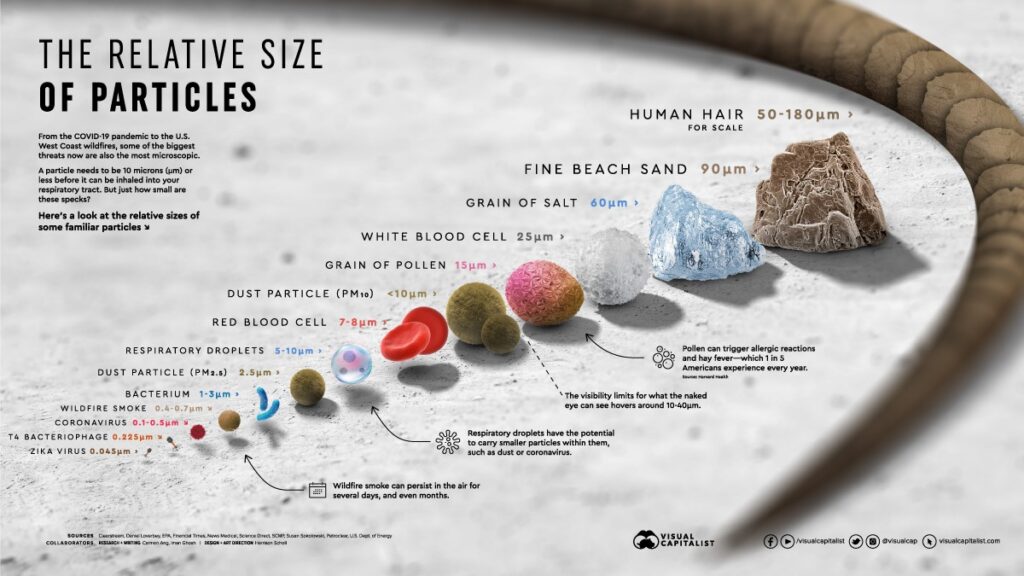A: Because size really does matter. Here is the “Keep It Simple, Scientist” version of relative particle size.
Many infections like COVID-19, the common cold, and flu are spread from person-to-person by respiratory droplets. That’s why it is good to cover your cough or sneeze. The spray that hits you when someone near you sneezes is full of viruses and bacteria. When we block respiratory droplets, we protect one another from getting germs.
Respiratory droplets from a cough or sneeze are about 5-10 micrometers (μm) in diameter. Our upper airway (nose and throat) traps most of those droplets. But the droplets smaller than 5 μm can carry viruses to the lower airway (bronchi and lungs). A coronavirus is a thousand times smaller than the smallest respiratory droplet. It varies in size from 0.1-0.5 μm. Thousands of coronavirus particles can be in a single respiratory droplet. More particles in a droplet increases the risk of contracting an illness.
Masks are rated by how well they filter particles. A good-fitting n95 mask will filter 95% of particles that are 0.3 μm in diameter. A good fitting single layer cotton mask can filter about 65% of those particles. A double layer mask is even better.
Masks are an important part of mitigating the spread of airborne infections. Take a look at the attached “Relative Size of Particles” infographic to see what other bits your mask can filter.
National Center for Biotechnology Information



